
 |
 |
 |
hyperSity architects-Beijing Shangzhuang Organic Farm Station
모듈식 구조와 지역적 특성을 반영한 디자인
베이징 하이뎬구(Haidian District)의 상장유기농 농장 스테이션은 Hypersity Architects가 설계한 혁신적인 농업 시설입니다. 이 지역은 과거 나란(Nalan) 가문의 농지였으며, 현재는 농업과 건축 디자인이 융합된 공간으로 재탄생했습니다.
-프로젝트 개요
상장유기농 농장 스테이션은 농업 시설의 새로운 모델을 제시합니다. 400제곱미터의 부지에 효율적인 자재를 사용해 농업과 공동체 활동을 위한 공간을 창출했습니다. 이 프로젝트는 단순히 기능성을 넘어서서, 지역의 역사와 문화를 존중하는 디자인을 통해 깊은 의미를 담고 있습니다.
-주요 특징
위치: 베이징 하이뎬구(Haidian District)
부지 면적: 400제곱미터
설계자: Hypersity Architects
주요 자재: 집성목(glued laminated timber), 강판 금속 부품
기능성: 주방, 식당, 워크숍 공간
-건축 디자인
이 프로젝트는 하이뎬구의 전통적인 농업 풍경을 존중하면서도 현대적인 감각을 더한 디자인입니다. 건물의 디자인은 모듈식 접근 방식을 채택해 유연한 공간 배치를 가능하게 했습니다. 주요 구조는 집성목으로 이루어져 있으며, 이는 전통적인 건축 논리와 현대적 요구를 모두 충족시키는 선택이었습니다.
-구조적 세부사항
기둥 그리드: 깊이 4700mm, 너비 5700mm
모듈 유닛: 자유롭고 유연한 공간 조직 가능
반실외 공간: 건물과 주변 필드를 연결
집성목 구조: 네 방향으로 퍼지는 기둥, 공간 프레임 지붕 시스템 형성
-기능적 공간
이 건물은 농업 활동과 공동체 모임에 필요한 다양한 기능을 담고 있습니다. Hypersity Architects는 “밭에서 식탁까지”라는 개념을 중심으로 주방과 식당을 설계했으며, 독립된 워크숍 공간도 마련했습니다. 이러한 공간은 지역 주민과 방문객에게 농업과 식문화를 경험할 수 있는 특별한 기회를 제공합니다.
-내부 배치
주방과 식당: 농장에서 수확한 신선한 재료로 요리할 수 있는 공간
워크숍 룸: 요리와 식사 준비를 위한 유연한 공간
유연한 공간: 필요에 따라 작은 공간으로 나눌 수 있는 큰 개방형 공간
-자재 및 건설
목재는 유연성과 산업화된 조립이 용이하여 농촌 건설에 적합합니다. 집성목과 강판 금속 부품을 사용해 구조적 완성도를 높이고 미적 가치를 더했습니다. 이 프로젝트는 지역 주민에게 일자리를 제공하고, 목재 건축의 장점을 널리 알리는 계기가 되었습니다.
-건설 과정
자재: 현장에서 조립된 공장에서 가공된 목재 사용
시간 프레임: 두 달 내에 구조물 조립 가능
미적 요소: 금속 가장자리와 브래킷이 있는 정교한 접합부 미학
-디자인 철학
건축가는 자재를 효율적으로 사용해 기능적이고 미적으로 만족스러운 공간을 창출하는 것을 강조했습니다. 이 프로젝트는 단순히 공간을 만드는 것을 넘어, 지역 사회와의 상호작용을 통해 지속 가능한 농업 모델을 제시합니다. Hypersity Architects는 전통적인 건축 논리와 현대적 요구를 조화롭게 결합하여, 실용적이면서도 아름다운 공간을 만들어냈습니다.
-자재의 합리적 사용
구조적 조직: 목재와 금속 부품의 효율적인 사용
미적 매력: 부드러운 시각적 확장과 정교한 접합부 디테일
기능적 통합: 다양한 농업 및 공동체 활동을 수용하도록 설계된 공간
상장유기농 농장 스테이션 탐방
상장유기농 농장 스테이션은 농촌 환경에서 혁신적인 건축 디자인을 보여주는 모범 사례입니다. 모듈식 건설과 효율적인 자재 사용을 결합해 농업과 공동체 목적에 맞는 다목적 공간을 창출했습니다. 이 접근 방식은 농촌 건설의 전통적 논리를 존중하면서도 현대적 디자인 요소를 통합해 지속 가능하고 기능적인 건축의 예를 제시하고 있습니다.
translate by ChatGPT







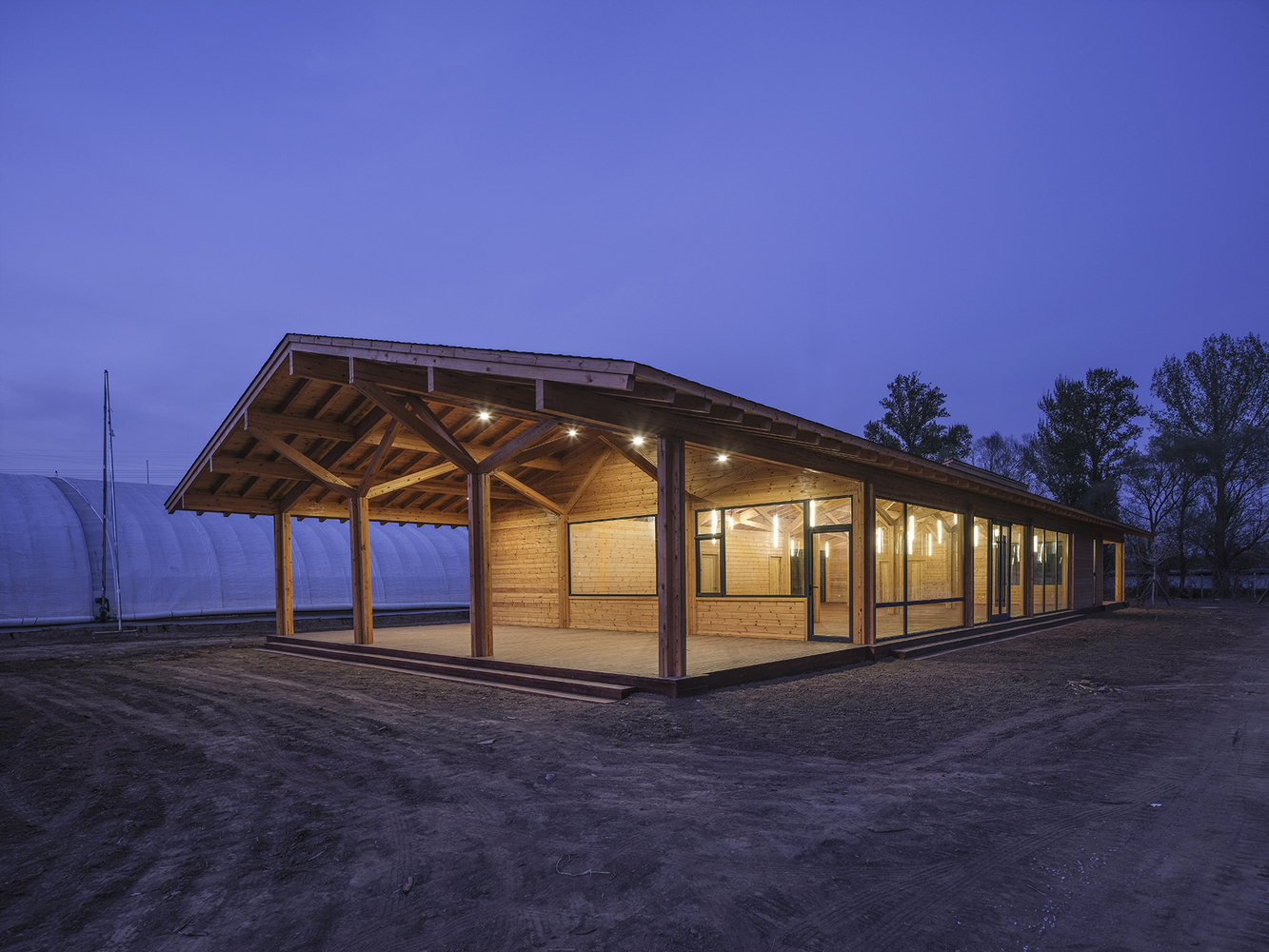









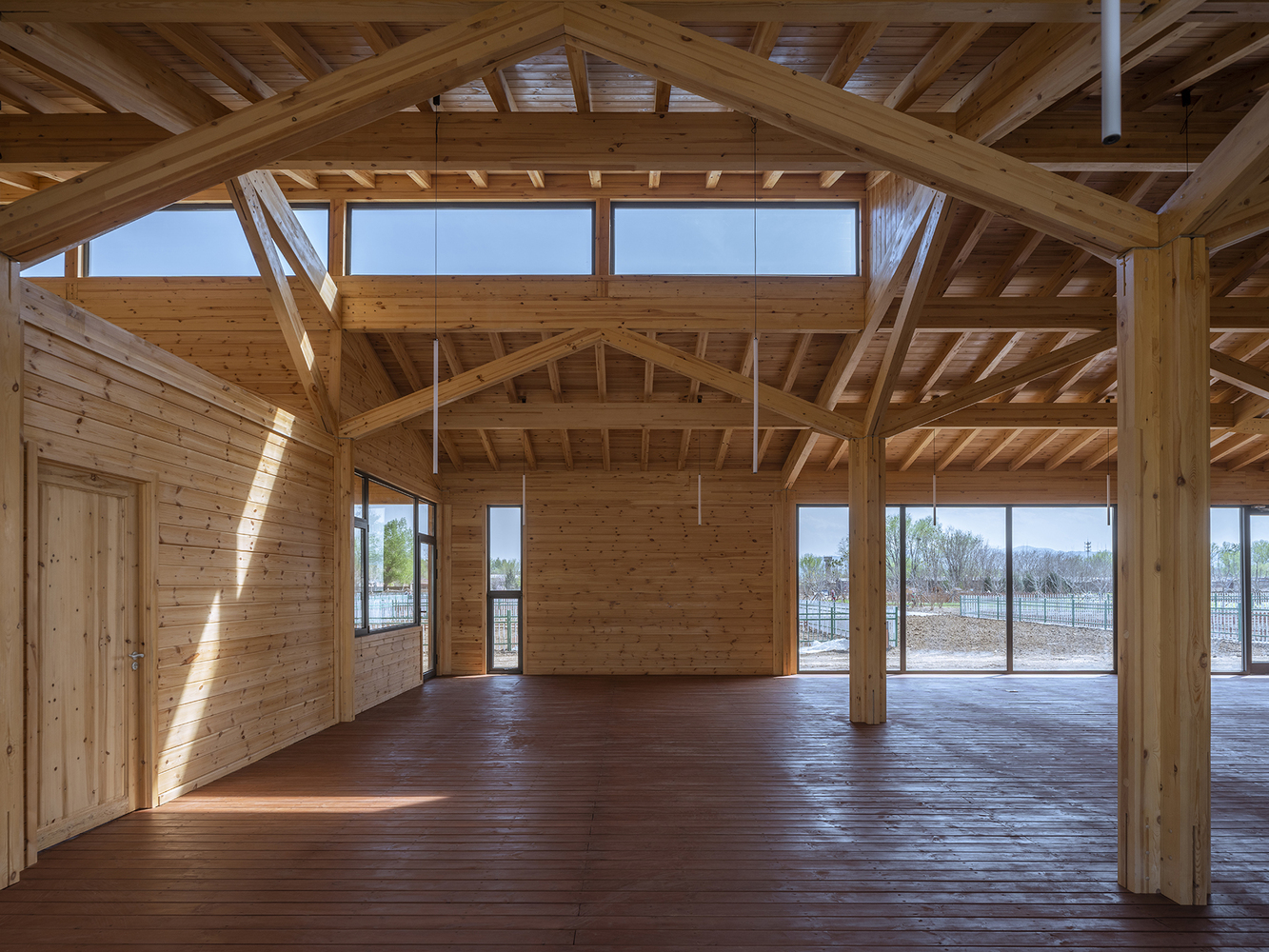
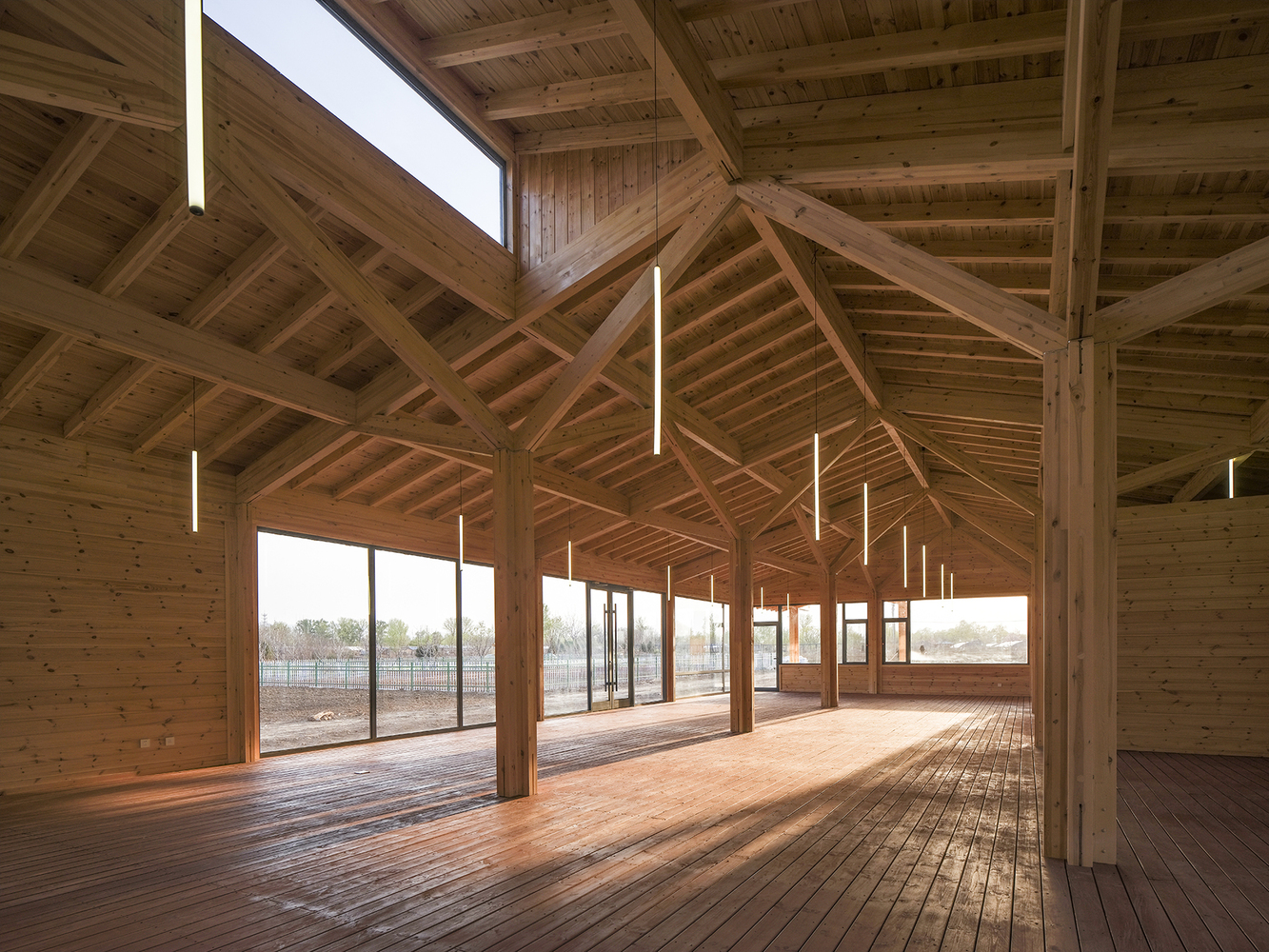

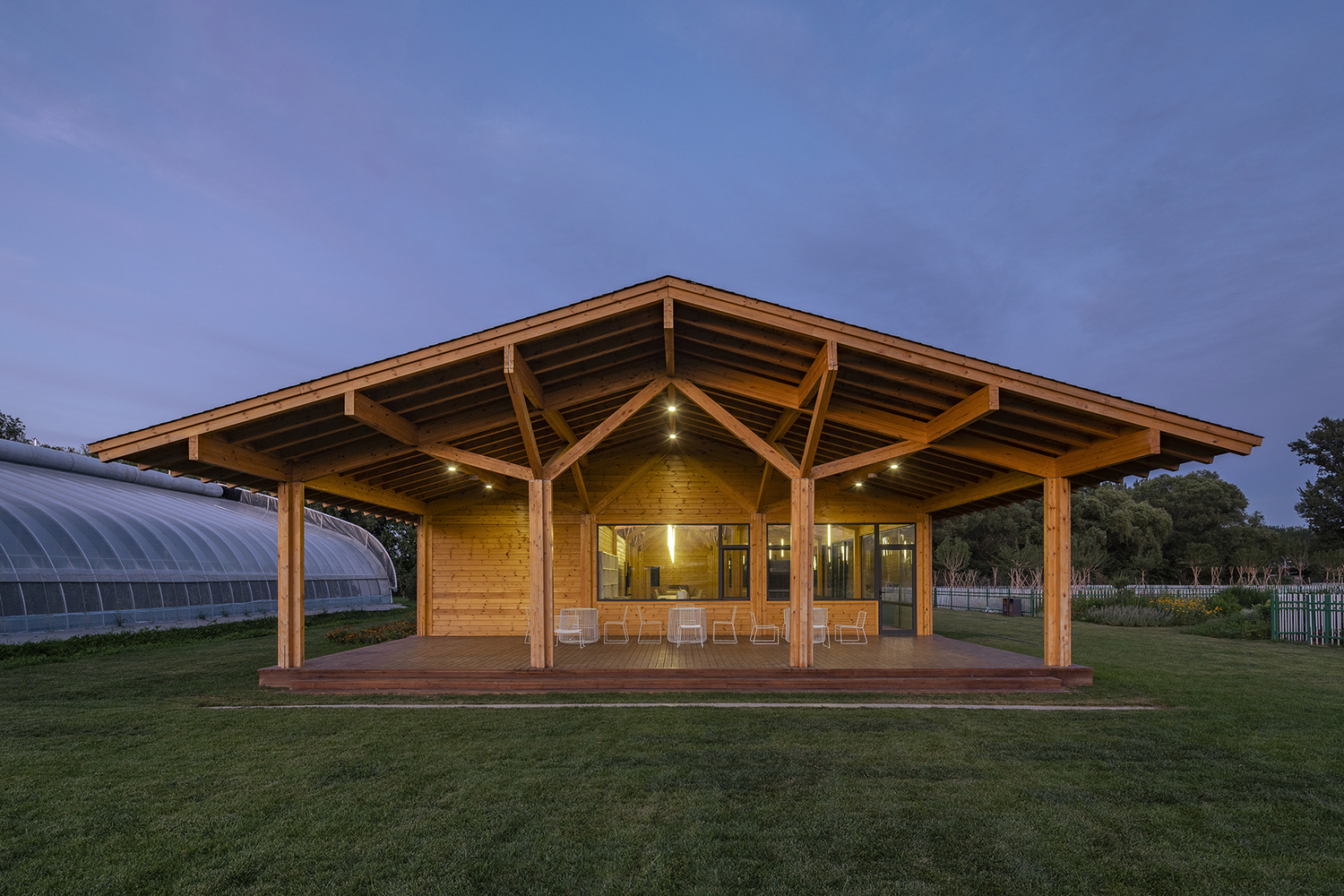






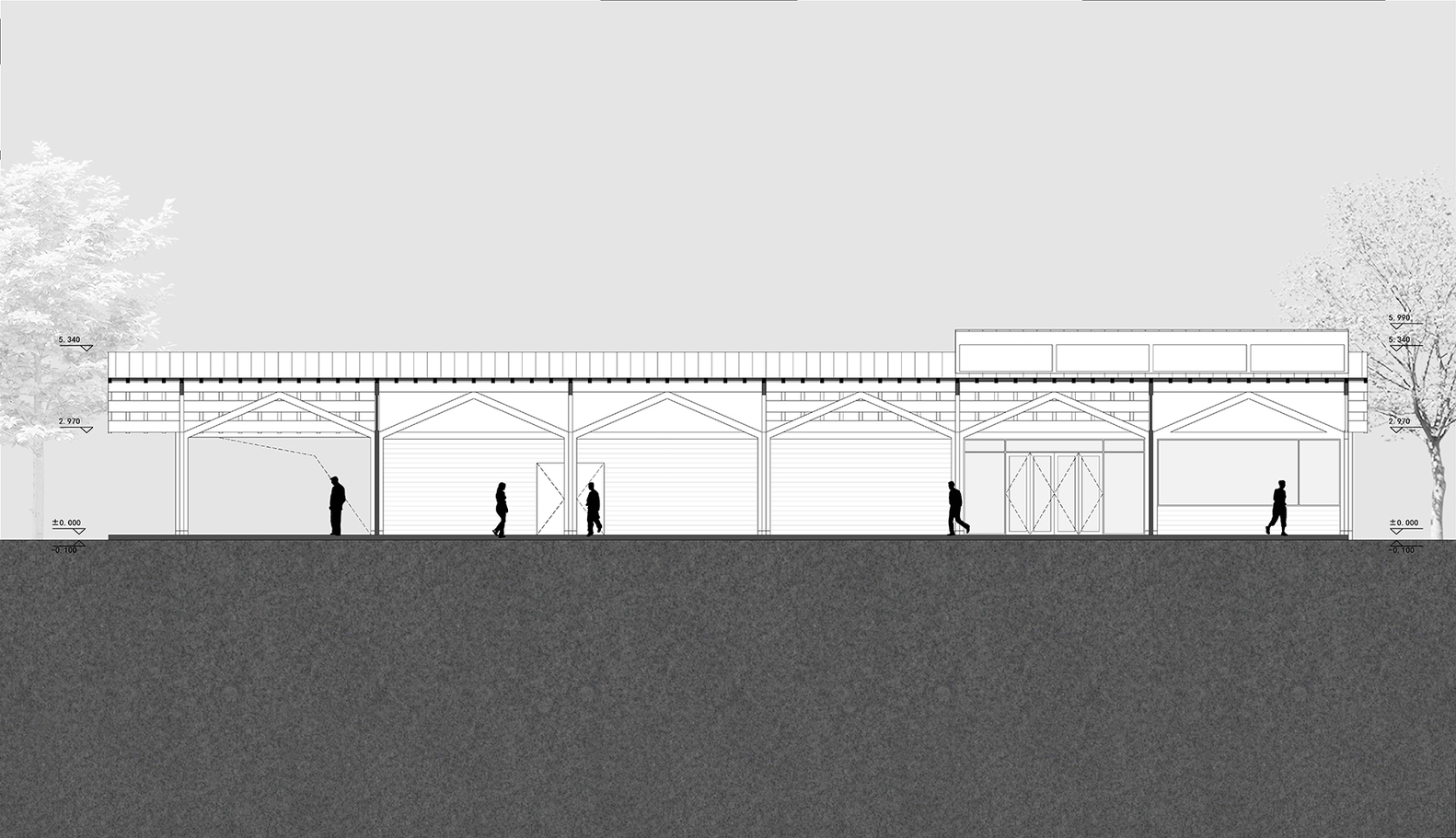


Shangzhuang in Haidian District, Beijing, was once the countryside estate and farmland of the Nalan family. The project aims to explore the architectural prototype of rural agricultural facilities and think about how to use materials to organize structures in a rational and effective way, naturally generating specific interest spaces. On a 400-square meter field in the countryside, the architect decided to use a comprehensive spatial form to fulfill the integration of functional needs from the field to the table.
The spatial structure of the station building uses a column grid with a depth of 4700mm and a width of 5700mm in the longitudinal direction and is built using modular units in a free and flexible manner. Under the uniform modular relationship, local spatial divisions, changes in light and shade, etc. are achieved. On the west side of the building, a semi outdoor space is left, which connects the building and the field views and functions closely. The south side of the building is a landscaped area for adoptive agriculture, and the open floor-to-ceiling glass brings it into the interior. The north side of the building is considered the relatively closed space of the northern climate.
The station building has a kitchen, dining room, and several independent rooms, which can accommodate workshop functions for cooking and preparing meals. In the future, the large space in the comprehensive space can be freely divided into several interconnected and integrated small spaces, and the partition walls removed to leave a large continuous space. People can arrange the post stations freely, transforming them into any form they desire.
Timber architecture is not a design deduction based on space, but rather a consideration of how to use materials in a rational and effective structural organization, from which a specific space naturally emerges. The basic structural form of the building uses a glued laminated timber structure and is modified into an umbrella shape, closely following the traditional logic of structural types. The steel plate metal components are not only an important element of structural expression but also enable the columns to spread out in four directions in the form of an umbrella, forming a space frame roof system that provides the possibility of expanding the scale and spatial form of the building. On the other hand, the steel plate is connected to the glued laminated timber columns through brackets and displays a metal edge at the bottom, which can create a smooth visual extension by displaying a refined joint aesthetic.
Timber architecture is a good choice for rural facilities, as its flexibility and industrialized assembly can break through the construction technology and cost barriers in rural areas. From factory processed wood, workers can assemble the structure on-site within two months, allowing for cross-regional production and assembly.
from archdaily